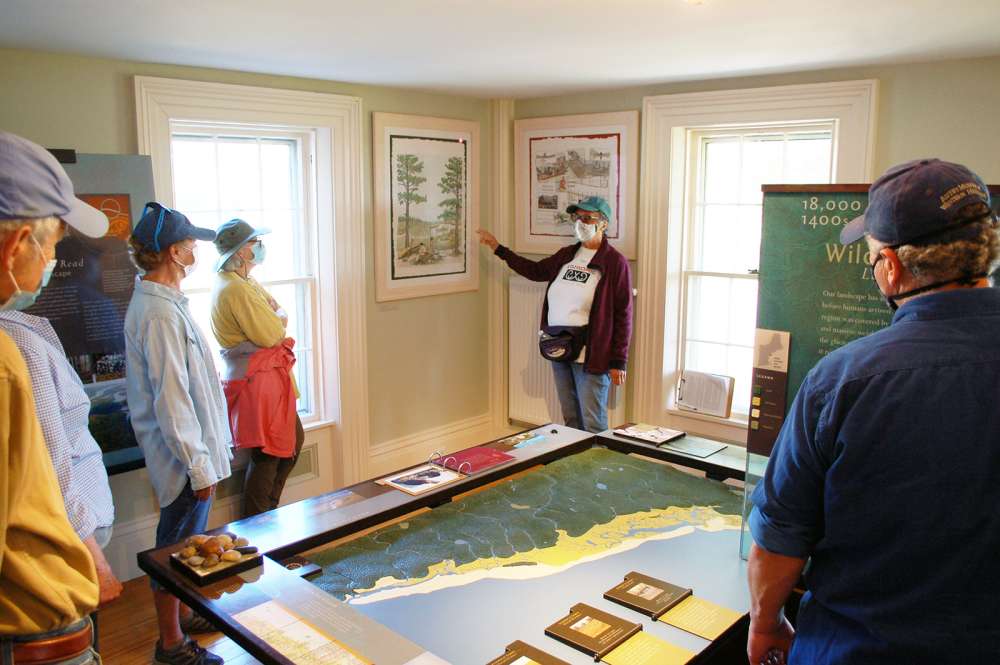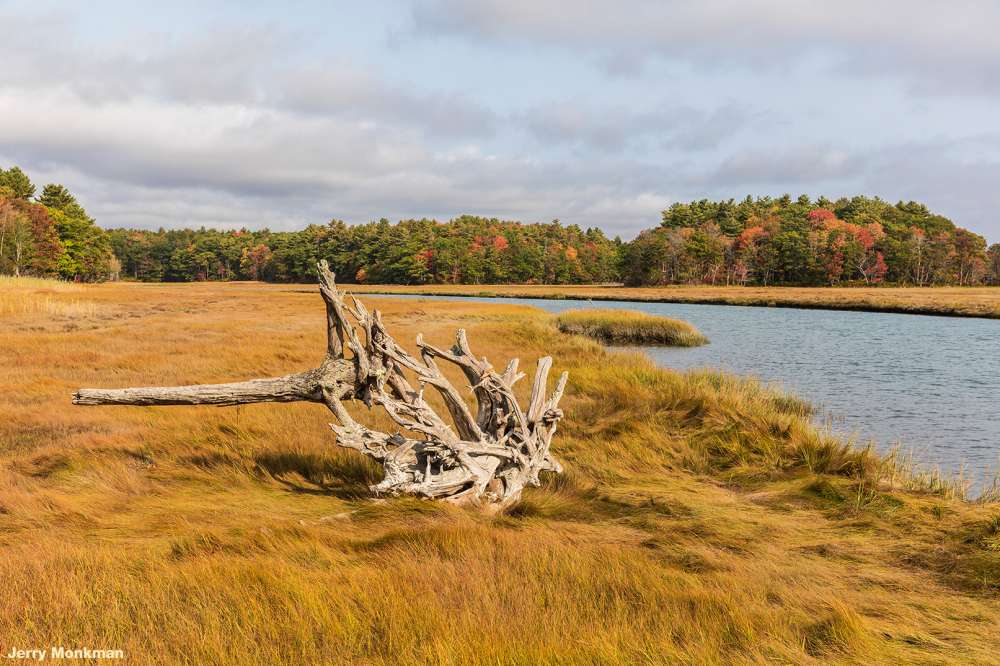The Wrack
The Wrack is the Wells Reserve blog, our collective logbook on the web.
The Wrack is the Wells Reserve blog, our collective logbook on the web.
Our group stands in an arc facing out from the Laudholm farmhouse. Linda Littlefield Grenfell, at the barn end of our line, sweeps her left arm across the viewscape, directing seven of us to "Imagine no buildings, no roads, no lawns. What did this place look like before all this?"
It takes a moment; it is hard not to think of an elephant. Then with a slight turn I look across fields of forbs and long grass to the distant border of turning maples and, beyond, an indistinct seawater horizon under the sky-blue sky.
I begin to add trees. Old oaks and pines. Not too many. Beneath them the ground is passable. I clear much of the grass, keeping its October yellow while drawing what remains into scattered bunches. Linda continues.
"What did it look like when Henry and Ann Boade settled here in 1643?"
I recall a descriptor I've read in an early document: "upland meddow." I remove some trees and allow the grasses to fill in. Eyes closed, I glance about. What else is here? I know to leave out bittersweet and barberry, but what of milkweed and goldenrod? Do I have too many trees? Too few? Unsettled and unsatisfied, I lift my lids and cast a gaze eastward, encouraging the barns to fade away. In the distance, a twisted waterway reveals itself winding through salt marsh, in no hurry to reach its terminus. As the river roams, I construct a contradiction. The oxbows are full and bright blue, but at the mouth I see mud flat and a shallow silver river taking a narrow cut through the dune.
Henry and Ann are nowhere to be seen, but I do attempt to people the vision. This program that Linda leads is called Wabanaki Wonderings, after all.

Linda has been imagining these scenes since childhood. She told us that when she was growing up along Spinney Creek in Eliot, her mother would ruminate about a tribal elder who used to come by. She took those stories into the woods and entered another time, pretending an aboriginal lifestyle she could scarcely comprehend in its fullness. Solitary or with friends in the riparian forest, studying leaves, stalking frogs, spying on squirrels, tracking woodpeckers, she was doing what she had guided us to do today: Exploring her imagination.
Years later, Linda joined the education team at the reserve, still drawn to nature and still intrigued by Indigenous culture. In reading the history of Wells, one particular tale drew her in:
A child, Tabitha Littlefield, was thought to have been killed during a 1703 Native raid on the town, but apparently was taken captive. One account speculated she “liked the wild life of the woods” and remained out of touch with her townspeople for many years. One day, the story goes, a young woman came to Wells with a party of Wabanaki traders and, while they were “bartering and chaffering,” approached a local woman to ask “Do you remember Tabitha Littlefield?” She then stole away.
“I do sometimes romanticize the Native people,” Linda admits. “But Tabitha Littlefield lived my fantasy.”
The latter-day Littlefield no longer dwells in a questionable childhood construct. She even acknowledges reluctance in leading this very tour. “I’m feeling apologetic for being an old white lady leading a program on Wabanaki life. Who am I to do this?”
But Linda lives the quandary and scatters answers through the program. “I feel a deep nature connection.” “I have been doing my research.” “I have met and consulted with Wabanaki people.” “I always reference where my learning has come from.” “I present all my information with integrity and respect.”
The teaching, when done with such care, is appropriate and necessary. Old white ladies and men—young ones too—can carry this burden so Wabanaki people are less imposed upon to do so. A trusted Penobscot elder told our leader as much: “Linda, we need you.”

Our group walks to the edge of the estuary to resume our wondering. “I think this is one of the places that looks much as it did 500, 1000 years ago,” Linda tells us, and it’s easy to agree. Someone spots an egret on the marsh. To its right lies a large piece of driftwood—the better part of a tree, actually—bleached gray and worn smooth. The windswept salt hay is thick and bright, complementing nearby beech and maple. A gull cuts the air to our right.
“I have asked a number of Wabanaki visitors whether their ancestors lived here,” Linda says. “They all say the same thing: There would have been summer encampments, but not a permanent settlement.” For millenia—or, they would say, since the beginning of time—people have come to the coast in the spring, spent summers harvesting fish and shellfish and sweetgrass, then taken a cue to move back inland, often far upriver, to pass winters in protective forest.
A hundred crows burst out of the marsh where just a few had been standing, alert to our presence but biding time. The flock is raucous and aswirl, coalescing around a woodland hawk that wandered out of its element. The commotion pulls us back into the present, where we begin an abbreviated discussion of rights, responsibilities, and unjust laws.
Our time is up for today, but Linda pitches a parting thought: “One good way to start being allies,” she concludes, “is to protect the resource.”
—From the Fall 2021 Watermark